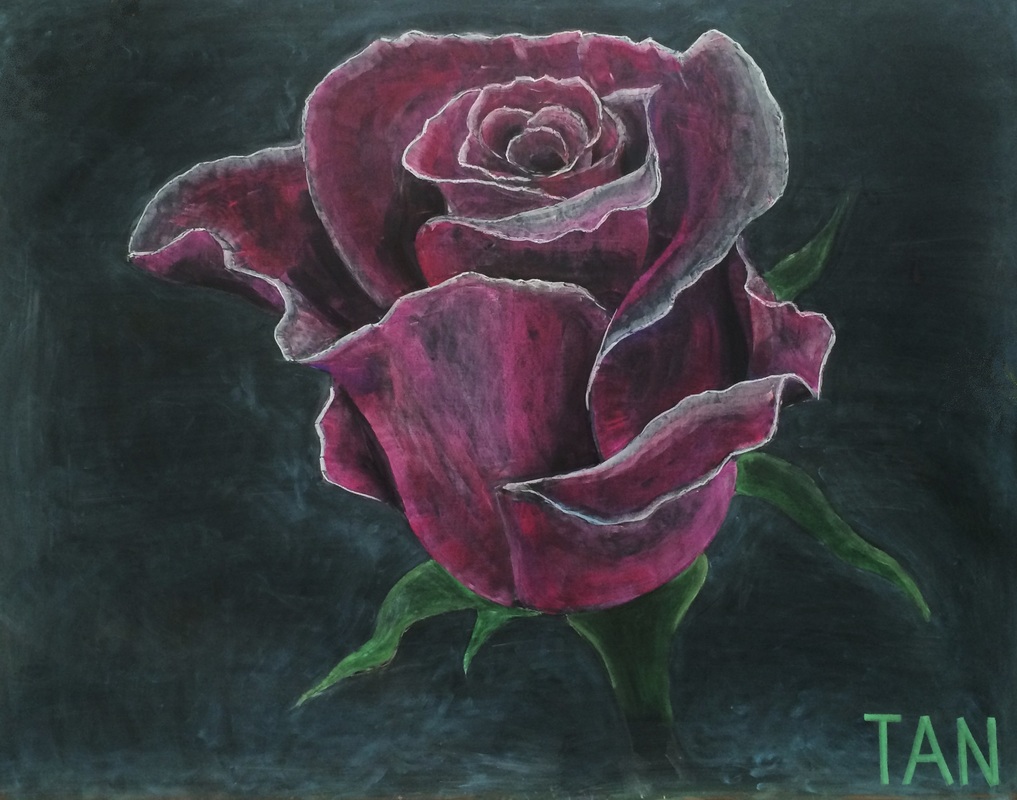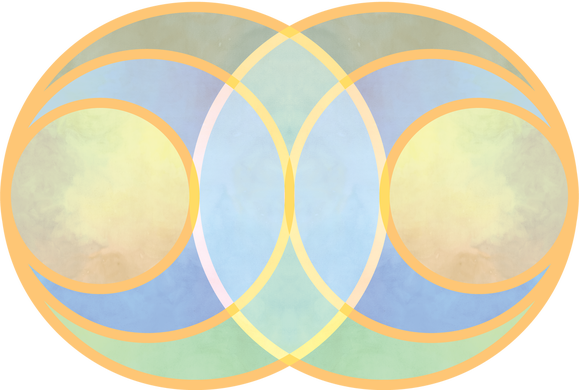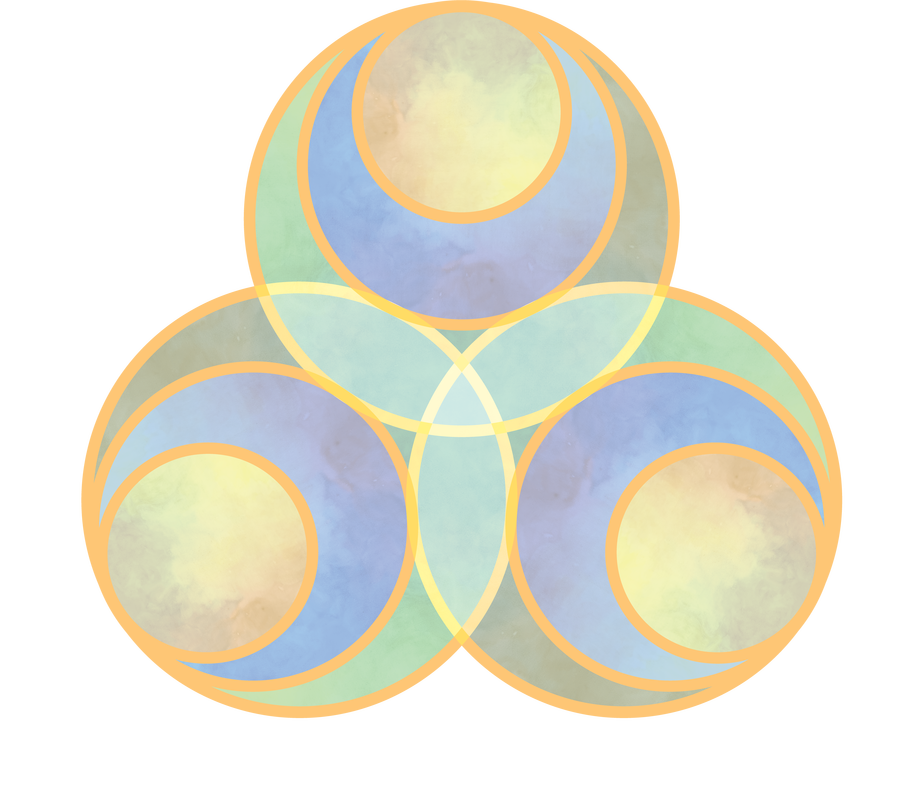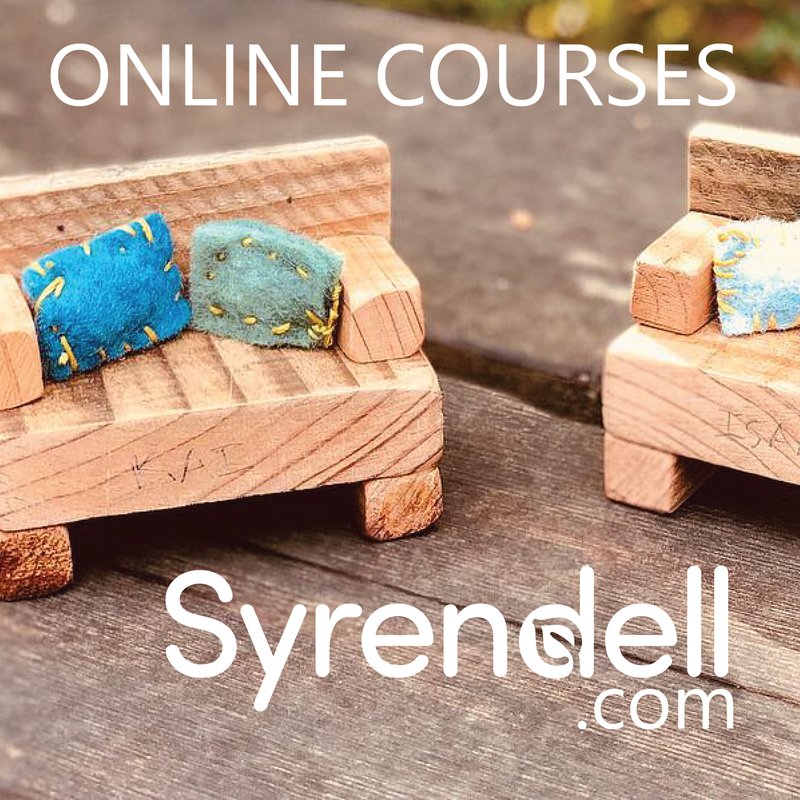|
A good friend of ours who lives in Davis, California, with her family is a floral designer. She is brilliant in many ways: a devoted wife and mother, a passionate scientist with a Master's degree in molecular genetics, and an innovator with a refined eye for floral arrangements. With the discipline of a scientist, she learned the art of floral design, and continues to hone her craft with every bouquet and boutonniere she assembles. Her hands, her eyes, and her imagination are guided by something in her that informs her when her work is complete. As an artist, one who leads a creative life, striving for the beautiful is a life-long endeavor. It is, as with other creatives, a mission - an obsession - for a meaningful communion with a divine designer. Leonardo da Vinci illustrated a book written by Luca Pacioli called De divina proportione in the late 1500's. It was a book on geometry that explored the golden ratio (1.618....) and its significance in mathematics. For artists, mathematicians, architects, and scientists, the Golden Ratio represented something universal, if not divine. It offered a notion that underneath the seemingly random beauty of nature, there was an intelligence, or an intentionality, to the design that connected all things. A star inscribed in a pentagon and the proportional lengths of the bones of the fingers possess the golden ratio. The spiral of a nautilus shell and the arches of a cathedral possess the golden ratio. Art is imbued with a natural law. The creative life is all about tapping into that natural law. When our floral designer friend steps back from a bridal bouquet she has just finished and nods with satisfaction, she may say that the finished product is a result of her training mixed with intuition. From a deeper perspective, that moment of satisfaction is the instant she has tapped into the divine beauty of nature's design. When an architect creates a structure perfectly suited to its surroundings and its inhabitants, she has communed with the divine designer. When a poet, writer, composer, and playwright create pieces that speak to our hearts and souls, they have connected with a miraculous muse. When a painter has captured the essence of a landscape or the nuances of a face, he has tapped into the spirit spring. The creative life is pleasurable and fulfilling, but it is just as painful and frustrating. The bouquet that is not symmetrical, the line that is off-center, the word that is just not accurate, the color that won't cooperate - these bug the heck out of a creative individual! It is not about perfection, it is about peace. Like listening to the dissonant sounds of an orchestra tuning to each other that gradually harmonize, one achieves peace when a harmonious connection to each other and to the beautiful are made. A creative life is a quest, an arduous task, a commitment to be a conduit for nature. It is a quest for grace, beauty, and peace. The creative life is a mission for meaningful relationships with each other. It is to discover one's own creative spirit, given courage by divine grace. This is a re-post from The Waldorf Way, October 4, 2009:
Once we develop these inner qualities, we stand above all the dangers that can arise from the division in human nature. We can no longer stray from the path. These qualities, therefore, must be formed with the greatest precision. Then we enter the esoteric life. -Steiner, Berlin, December 7, 1905 Steiner describes a series of qualities that are essential to our growth and development. Inner work is a major construct of anthroposophy, and one can easily understand the importance of it for the Waldorf classroom teacher, and for anyone else who wants to work on their inner Self. The six essential qualities are as follows: 1. Control of Thoughts. Mastery of one's own thoughts begins with setting aside a short time each day to focus consciously on a thought, placing it center in one's mind, and actively arranging other thoughts related to it in a logical manner. This exercise creates order within one's intellectual capacity. 2. Self-Initiated Action. Often, our actions are a result of reactive circumstances, obligations to work and family, and environmental stimuli. This exercise asks one to initiate an activity or task that is derived solely from one's own inner drive, creating a connection with the individualistic, unique Self. 3. Evenness of Feelings. Steiner describes it as detachment or imperturbability. One simply practices in regulating emotions to weather the ups and downs of life. Also, it describes the ability to take an objective perspective to evaluate the circumstances and surroundings. Sometimes, it helps to step outside of the self to see clearly. 4. Goodness of a Thing. In everything, there is goodness. One must practice in seeing the silver lining in every situation that arises. We are confronted every day by what appears to us as negativity. It is a higher state to see the positive within it. 5. Having Faith. In the esoteric sense, this means that every new experience is met with openness. One must practice in avoiding past events and circumstances to color how one may approach a new idea or thought or concept. This allows you more freedom to experience the fullness of the world. You become fearless. 6. Balance. This is key to any esoteric or practical training. One must practice in harmonizing activities so that there is time for meditation, for practicing these exercises, for family, and everything else that develops a person into a fully functioning human being. Author's Note, February 24, 2016: Teacher training at Rudolf Steiner College was like being at a gateway to a hidden garden. Standing at that gateway looking in, I was in awe of the colorful world of Waldorf. When I entered the garden, I was given the opportunity to uncover its roots - anthroposophy, and sample its fruits - Waldorf teaching. The garden, as I had realized, was immense! The gardener, Rudolf Steiner, had quite a green thumb, having fed this garden with a veritable stew of Eastern and Western philosophy and spirituality and science and initiate inspirations. The garden is beautiful and demands to be shared beyond the walls of Waldorf. Anyone who believes that inside him or herself resides a divine, creative universe will understand what Steiner was telling everyone: reach in, and you will find the artist of your life's canvas. “When a multi-sensory personality looks inside itself, it finds a multitude of different currents. It learns to distinguish between these currents and to identify the emotional, psychological, and physical effects of each. It learns which currents produce love, healing thoughts, and constructive actions.” --Gary Zukav, The Seat of the Soul Studying Steiner during Waldorf teacher training was very much a process that, up to this day, even after training was complete, and after teaching in a classroom, remains pretty mysterious. I rather like that about Waldorf. If Steiner's teachings were stated and static, then it would be awfully stale! The nature of his work is dynamic and delightfully alive, meaning, Steiner wants us to receive his work the way artists and authors receive the perceived world - self expression through inspiration. A caveat to this is that, through the process of using our imagination, inspiration, and intuition, leading to innovation - each individual, even though expressing the SELF, discovers that we are pulling from a shared truth. This idea of a shared truth could perhaps be evidenced by the human being's experience of the world through the availability of the TWELVE SENSES. According to Steiner in Study of Man, we are aware of only a few senses in "ordinary science" because those senses like hearing, seeing, smelling are obvious, but the others that complete the twelve are "less conspicuous". I created the mandala of the twelve senses above to help me organize them. Steiner categorizes them in thinking, feeling, and willing. As sensory mechanisms, I grouped them as COMMUNICATION (thinking), COMFORT (feeling), and COORDINATION (willing). It makes sense to me. To the organizing into the three bodies, Steiner says: "Neither pure thinking-cognition, nor pure feeling, nor pure willing is ever present alone: the three always work together, weave together into a unity. And this is true of the whole human being even in the physical body." Chapter 8 of Study of Man offers a good description of the twelve senses that is digestible. I will briefly say that "other's ego" is like an awareness of another person (I am considering the using empathy) and "homeostasis" is what I call Steiner's "sense of life". Your own research may give you a different picture, so I won't expand on the twelve senses here - you are your own artist and author. On this day, we have to consider ourselves fortunate to receive a rose, or a treat, or a hug, a smile, a kind word, phone call, text, a hand to hold your hand, a shoulder to lean on; to have someone make breakfast for you this morning, someone to put away your laundry, someone to draw you a picture; to have a person who catches you when you fall, a person who cheers you on, a person who cares for you. On this day, we have to consider ourselves fortunate to give a rose, or a treat, or a hug, a smile, a kind word, phone call, text, be the hand to hold another's hand, be the shoulder to lean on; to make breakfast for someone this morning, to put away someone's laundry, to draw someone a picture; to catch someone when they fall, to cheer for someone, to care for someone. Receiving and giving. We have to consider ourselves fortunate to love and be loved. Pictographs, cave drawings, hierolyphs, logos, brands, avatars, icons, and symbols. These communicate concepts that we have attached some kind of meaning to. I designed these three mandalas to represent the three-fold human being, first as an individual, then in a partnership, and third, as a community. First, the one above is the individual, diagrammed as three CIRCLES. Take a bird's eye view. The smallest circle is the HEAD. The second circle is the HEART (think chest). The largest circle represents the HANDS (think arms outstretched as if in an embrace). In Waldorf-speak, they are also referenced as THINKING, FEELING, and DOING. This second mandala below represents the CONNECTION between partners in a loving relationship. This mandala shows that in partnership, intellect and thoughts (the THINKING) remain the individual's own and are nurtured by the other, love (the FEELING) is exchanged, and the tasks of love (the DOING) are equally shared. This third mandala below represents COMMUNITY. Here, thoughts and ideas (the THINKING) are balanced, and empathy and compassion (the FEELING) fuel the collaborative tasks of community (the DOING). This shows that individuals make their own contributions in THINKING, FEELING, and DOING toward common goals. "Learning and innovation go hand in hand. The arrogance of success is to think that what you did yesterday will be sufficient for tomorrow." - William Pollard (1911-1989), priest and physicist We live in an exciting time where we have an opportunity to spark a modern Renaissance. In many fields - education, engineering, philosophy, medicine, religion, politics to name a few, we want to effect change that improves and enhances our global community. We are poised for cultural renewal, one that is dynamic yet sustainable, and we need the tools to achieve it. Here is one viable formula: imagination + inspiration + intuition = INNOVATION. From a series of lectures delivered in Basel, Switzerland, in 1909, Rudolf Steiner connected imagination, inspiration, and intuition as a form of spiritual scaffolding. Imagination is the capacity for super-sensible cognition of the physical world as imbued with a living essence. Inspiration is the next level up that directs imagination towards a path or goal. Intuition is the highest form of cognition whereby the individual is the living essence. Translated and transcribed from Dr. Steiner's lecture, about intuition: "...there shall be in the human being that quality of universal love which causes him to make no distinction between himself and the other beings in his spiritual environment, but to pour forth his very self into the environment; thus he no longer remains outside but lives within the beings with whom he has spiritual communion." Dr. Steiner was cutting edge in his thinking, and in modern parlance, an innovator. What is innovation? It is derived from Latin innovare - to renew or make anew. It describes a transformative process that is meant to be a shared, communal experience. When Dr. Steiner spoke of imagination, inspiration, and intuition, he invited each of us to first look inward. Then, gradually, we develop a proficiency for converting individual thoughts (imagination) towards a directed path (inspiration) and finally, becoming one with the universal thought (intuition). The next step would be to transform enlightened thinking into empathetic doing. This is where innovation comes in. The spiritual world of the inspired, intuitive imagination leads to the practical world of innovation - of renewal and renaissance. This equation gives substance to the spirit, the tangible to the tantalizing, the work to the wonder. From J.K. Rowling, author: "Imagination is not only the uniquely human capacity to envision that which is not, and therefore the fount of all invention and innovation. In its arguably most transformative and revelatory capacity, it is the power that enables us to empathize with humans whose experiences we have never shared." Her Harry Potter books have certainly sparked renewal (in literary interest for the youngsters), and a renaissance in the wonder of wizarding magic! Innovation can be a scary prospect for some; people need time to cozy up to change. In some arenas, unfortunately, change from "the way things are done" is frowned upon. Perhaps, historically, change does not automatically mean improvement in the status quo. However, as a tool for the 21st century, equating intuition with innovation creates the formula for spirit-filled, purpose-driven transformation, and hence change that comes from a place of universally responsible intention. Neil de Grasse Tyson, the successor of Carl Sagan's Cosmos, puts it this way: "Once you have an innovation culture, even those who are not scientists or engineers - poets, actors, journalists - they, as communities, embrace the meaning of what it is to be scientifically literate. They embrace the concept of an innovation culture. They vote in ways that promote it." We are slowly recognizing the need for positive renewal. Dennis Klocek, Director of Consciousness Studies at Rudolf Steiner College, is a keynote speaker at an upcoming conference for Waldorf teachers. His lecture "Reigniting the Flame: Imagination, Inspiration, and Intuition" will bring Steiner's ideas to light for Waldorf educators. Combined with other presenters at the conference, such as Betty Staley, who encourages educators to "re-imagine the Waldorf curriculum", the message of innovation will be an important element to consider in the future of Waldorf, and education in general. In a comprehensive study conducted by the Stanford Center for Opportunity Policy in Education about Alice Birney, a Public Waldorf Charter School in the Sacramento City Unified School District, the program and faculty are applauded for their forward strides in education: "By serving as sites for innovation, district schools can learn much from their example about broader ways to conceptualize school and student development." Upload Growing a Waldorf-Inspired Approach to a Public School District here. In our work as a dynamic global community, in making decisions that affect all of us, our children, our resources, we need a purposeful, spirit-driven path of creativity and compassion. We are constantly learning, and if William Pollard is right in his thinking, we can't rely on what we knew yesterday to deal with tomorrow. Each present moment must therefore be an innovation, which is the sum of our imagination, inspiration, and intuition. |
Archives
June 2023
|











 RSS Feed
RSS Feed
